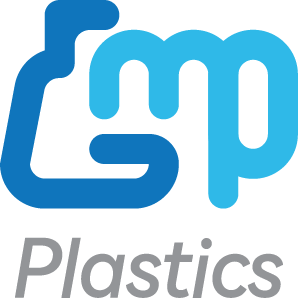Hey there, science enthusiasts! Have you ever stopped to wonder: Does the plate I use in my ELISA experiment really matter? Spoiler alert—yes, it absolutely does! Choosing the right ELISA plate can mean the difference between crystal-clear data and results that make you go, “Uh… what happened here?” 🤔
So, grab your lab goggles, and let’s dive into the science of ELISA plates—because even the tiniest details can make a BIG impact! 🚀
What’s the Deal with ELISA Plates?
ELISA (Enzyme-Linked Immunosorbent Assay) is one of the most widely used techniques in diagnostics, research, and biopharmaceutical development. Whether you're testing for disease markers, detecting proteins, or analyzing immune responses, ELISA helps scientists get precise and reproducible results.
But here’s the catch—not all ELISA plates are created equal! The material, coating, well design, and even the color of your plate can affect your experiment.
Choosing the Right ELISA Plate: What Really Matters?
When selecting an ELISA plate, there are a few key things you need to consider:
1. Material: Polystyrene is the Gold Standard
Most ELISA plates are made from polystyrene, and there’s a good reason for that—it’s:
✔ Chemically stable
✔ Resistant to breakage
✔ Has excellent optical clarity
But within the world of polystyrene, there are variations! Some plates have modified surfaces to optimize protein binding, while others are treated to reduce background noise.
Pro tip: Always check if your plate is optimized for your specific assay type!
2. Surface Coating: Because Not All Proteins Stick the Same Way
ELISA relies on the ability of proteins to bind to the plate surface, so the type of coating you choose is crucial. There are three main types:
- High-binding plates → Great for assays requiring maximum protein adsorption.
- Medium-binding plates → Ideal for general ELISA applications.
- Low-binding plates → Best when working with delicate proteins that need to stay in solution.
🔬 Example: If you’re running an antibody-based ELISA, a high-binding plate ensures better protein capture. But if you’re working with sensitive proteins, a low-binding plate prevents unwanted interactions.
3. Well Shape: U-Bottom, V-Bottom, or Flat-Bottom?
Different well shapes affect how liquid sits in the plate and how efficiently samples mix.
- Flat-bottom plates → Best for standard ELISA assays (easy to measure absorbance).
- U-bottom plates → Useful for agglutination assays.
- V-bottom plates → Great for maximizing sample recovery.
💡 Fun Fact: Flat-bottom plates are the most common choice because they provide a clear optical path for plate readers—ensuring accurate data!
4. Plate Color: Does It Really Matter? (Yes, It Does!) 🎨
Believe it or not, the color of your ELISA plate can impact your results!
🔵 Clear Plates → Used for colorimetric assays (like the classic TMB reaction). These plates let you measure optical density (OD) accurately using a spectrophotometer.
⚫ Black Plates → Best for fluorescence-based ELISAs because they reduce background interference.
⚪ White Plates → Used for luminescence-based ELISAs, enhancing signal detection by reflecting light.
Moral of the story: If you’re doing a standard ELISA, stick with a clear plate. But if you’re working with fluorescence or luminescence, black or white plates are the way to go!
5. Well Number: 96-Well, 384-Well, or More?
The classic 96-well plate is the gold standard for ELISA, but sometimes, more wells = more power!
- 96-well plates → Standard choice for most ELISA assays.
- 384-well plates → Higher throughput, perfect for screening a ton of samples at once.
- 1536-well plates → Super high-throughput, but you’ll need specialized equipment.
If you’re running a large-scale study, a higher-well plate can help process more samples in less time! ⏳
Avoiding Common ELISA Plate Mistakes
Even if you pick the perfect plate, small mistakes can throw off your results. Here’s what to avoid:
🚨 Not choosing the right binding capacity → If your protein doesn’t stick well, your signal will be weak.
🚨 Using the wrong plate color → A luminescence-based assay in a clear plate? That’s a one-way ticket to bad data!
🚨 Skipping washing steps → Residual unbound antibodies can create high background noise.
🚨 Not optimizing incubation times → Too short = weak signal, too long = high background. Timing is everything!
Final Thoughts: The Right Plate = The Right Results!
ELISA is one of the most powerful tools in science, but your results are only as good as your setup. Choosing the right ELISA plate can boost sensitivity, improve reproducibility, and make your life in the lab a whole lot easier!
So, the next time you’re setting up an experiment, remember: not all plates are created equal! 🏆
Stay curious, keep experimenting, and always remember—science is in the details! 🧪🚀





